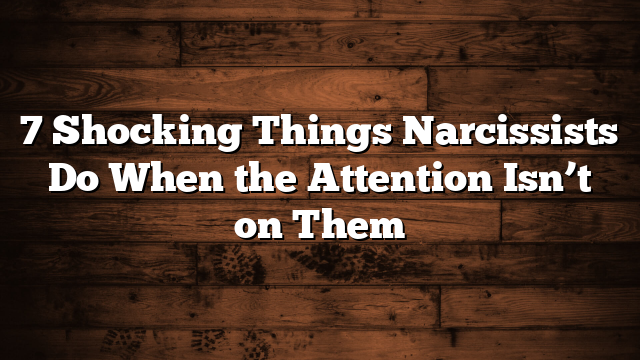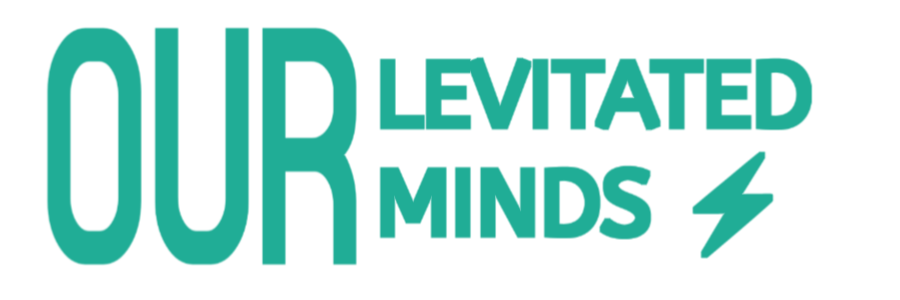7 Shocking Things Narcissists Do When the Attention Isn’t on Them
7 Things Narcissists Do When the Attention Isn’t on Them
Narcissists thrive on attention. It fuels their self-esteem, reinforces their sense of superiority, and ensures they remain in control of their environment. When that attention shifts away, their behaviour often becomes manipulative, dramatic, or controlling. Understanding these patterns is essential for anyone navigating relationships with narcissists, whether in personal, professional, or family contexts. Here are seven common behaviours narcissists display when they are not the centre of attention.
Behind The Mask: The Rise Of A Narcissist
1. Feign Illness or Exaggerate Problems
One common tactic narcissists use is to feign illness or exaggerate minor issues. This behaviour is designed to redirect focus onto themselves. By appearing vulnerable, unwell, or in need, they compel others to respond, providing them with the attention and sympathy they crave. It may seem harmless at first, but over time, these constant demands can drain the emotional energy of those around them. Victims may feel guilty for not responding, further cementing the narcissist’s control.
This tactic also serves a dual purpose: it positions the narcissist as a victim, making anyone who questions or challenges them appear uncaring or insensitive. In effect, they manipulate the environment to ensure they remain the focus, even in situations where attention would naturally be elsewhere.
2. Sulk or Use the Silent Treatment
When attention is not forthcoming, narcissists often resort to sulking or giving the silent treatment. This passive-aggressive behaviour is a deliberate attempt to punish others for ignoring them. Sulking may involve withdrawing emotionally, refusing to communicate, or acting moody in ways that create tension.
The silent treatment is particularly insidious because it forces others to guess what is wrong, generating anxiety and self-doubt. People often overcompensate, trying to appease the narcissist, which reinforces the narcissist’s sense of power. By making others feel responsible for their feelings, narcissists maintain control while subtly undermining confidence.
3. Create a Scene or Drama
Another tactic is creating scenes or dramatics to reclaim attention. Narcissists may start arguments, raise their voices, or behave theatrically to draw focus back onto themselves. These episodes can occur in public or private settings and are designed to disrupt normal interaction and reassert dominance.
This behaviour serves multiple purposes. It not only ensures the narcissist is noticed but also reinforces their narrative that they are central and important. By creating chaos, they shift attention away from others, making the environment revolve around them.
4. Talk Over Others
Narcissists rarely tolerate situations in which they are not the focal point, even in conversation. They often talk over others, dominate discussions, and dismiss contributions. The intent is clear: to reclaim the spotlight and ensure that their words, opinions, or stories are prioritised above everyone else’s.
This behaviour can leave victims feeling ignored, undervalued, and frustrated. It undermines normal communication and reinforces the narcissist’s perception of themselves as superior. Recognising this pattern is key to maintaining your own voice and establishing boundaries.
5. Humiliate or Belittle Others
When attention shifts away, narcissists may resort to humiliation or belittling tactics. They may tease, criticise, or shame others to reassert control and remind everyone who is “important.” These behaviours are often subtle, taking the form of backhanded compliments or sarcastic remarks.
The goal is to destabilise others while simultaneously elevating themselves. By undermining confidence and creating insecurity, narcissists redirect attention to themselves, ensuring that others remain focused on their actions, reactions, and approval.
6. Disappear Without Warning
Some narcissists use disappearance as a form of control. They may emotionally or physically withdraw without warning, creating chaos and anxiety for those around them. This disappearance is a power move, designed to make others chase them, worry, or overcompensate to regain their attention.
The unpredictability of this behaviour keeps others off balance and dependent on the narcissist’s approval. It also reinforces the narcissist’s control over the environment and relationships, as people adjust their behaviour in response to these sudden absences.
7. Lash Out or Display Anger
When all other tactics fail, narcissists often resort to anger. They may yell, criticise, or attack to shift focus back onto themselves. This behaviour can appear sudden and disproportionate, leaving victims feeling intimidated or fearful.
The purpose of lashing out is to regain control and command attention. It can also serve as a warning to others not to prioritise themselves or ignore the narcissist. Recognising that these outbursts are manipulative rather than rational helps victims maintain perspective and avoid internalising blame.
How to Protect Yourself
Understanding these behaviours is the first step in protecting yourself. Narcissists rely on others’ reactions to fuel their manipulation. By recognising patterns like feigned illness, sulking, dramatic scenes, talking over you, humiliation, disappearance, and lashing out, you can maintain emotional distance and set boundaries.
Some strategies include:
- Stay grounded: Don’t react impulsively to provocations.
- Maintain boundaries: Decide what behaviours you will not tolerate.
- Limit engagement: Avoid feeding into manipulative tactics.
- Seek support: Confide in trusted friends or professionals who understand narcissistic abuse.
By recognising these seven behaviours, you reclaim control of your own attention and energy. Narcissists cannot manipulate what they cannot dominate. Awareness, boundaries, and self-respect are your most powerful tools.
Check these out!
Behind The Mask: The Rise Of A Narcissist
15 Rules To Deal With Narcissistic People.: How To Stay Sane And Break The Chain.
A Narcissists Handbook: The ultimate guide to understanding and overcoming narcissistic and emotional abuse.
Boundaries with Narcissists: Safeguarding Emotional, Psychological, and Physical Independence.
Healing from Narcissistic Abuse: A Guided Journal for Recovery and Empowerment: Reclaim Your Identity, Build Self-Esteem, and Embrace a Brighter Future
(Sponsored.). https://betterhelp.com/elizabethshaw
Advertisements
Click on the links below to join Elizabeth Shaw – Life Coach, on social media for more information on Overcoming Narcissistic Abuse.
On Facebook.
On YouTube.
On Twitter.
On Instagram.
On Pinterest.
On LinkedIn.
On TikTok
The online courses are available by Elizabeth Shaw.
For the full course.
Click here to sign up for the full, Break Free From Narcissistic Abuse, with a link in the course to a free, hidden online support group with fellow survivors.
For the free course.
Click here to sign up for the free online starter course.
To help with overcoming the trauma bond and anxiety course.
Click here for the online course to help you break the trauma bond, and those anxiety triggers.
All about the narcissist Online course.
Click here to learn more about the narcissist personality disorder.
The narcissists counter-parenting.
Click here for more information on recovery from narcissistic abuse, and information on co-parenting with a narcissist.
Elizabeth Shaw is not a Doctor or a therapist. She is a mother of five, a blogger, a survivor of narcissistic abuse, and a life coach, She always recommends you get the support you feel comfortable and happy with. Finding the right support for you. Elizabeth has partnered with BetterHelp (Sponsored.) where you will be matched with a licensed councillor, who specialises in recovery from this kind of abuse.
Click here for Elizabeth Shaw’s Recommended reading list for more information on recovery from narcissistic abuse.




